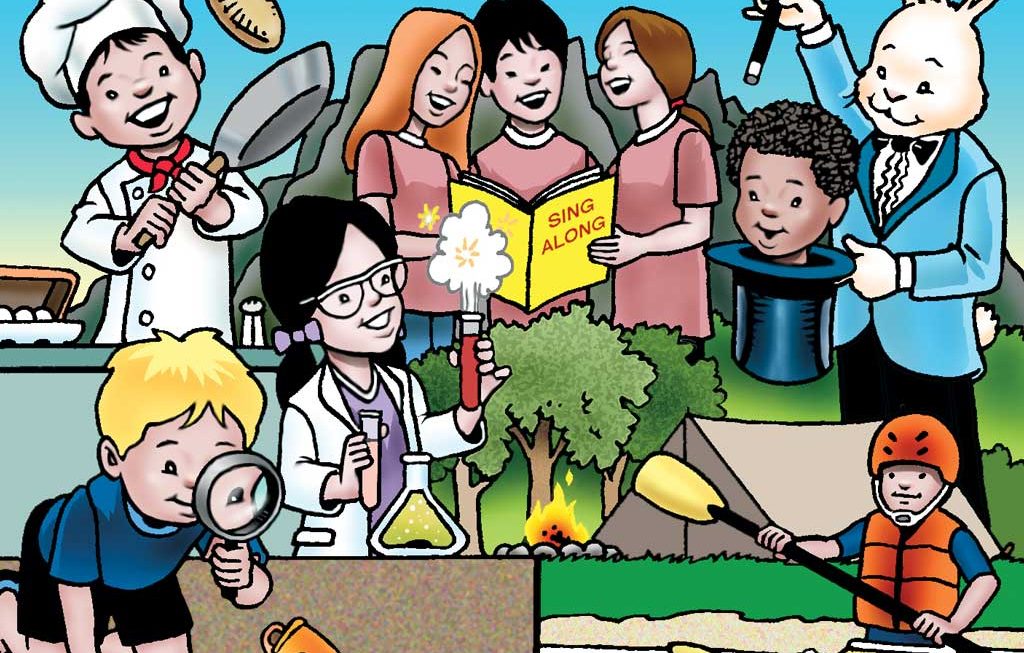by Jessica VanDyne
The time has come to choose an education center for your child, and if you’re like most parents, you’re feeling the pressure and wondering where do you begin? Every parent wants to be confident in deciding on the best program, but there are so many considerations to take into account when interviewing and choosing a school that it can feel overwhelming. Choosing a school for your child doesn’t have to be a daunting task. In fact, the choice can be broken down to two essential components – being informed and being prepared. The best place to start is with what you know best: your own family’s needs and most importantly, your child.
Understanding Your Family’s Needs
For many families, preschool is an essential part of life and allows us to work while our young children are well and cared for. First things first, break down the process by thinking about how each school will fit into your daily life. Learn the basics of each program: location, hours, tuition costs. Ask yourself if it’s important for the preschool to be near your home and your work. What are their hours and does this work with both yours and your child’s schedules? What is included in tuition costs and is this fee reasonable with your budget and expectation? Prepare for any upfront registration costs and look into waitlist times. Answering each of these questions will help you narrow down and eliminate any that do not work for you right away. From here, you’ll know which schools you’d like to tour.
Prioritizing Your Child’s Well-being
The most important person to consider in this process is your child. They will be the one spending their time at the facility you choose and considering their needs and wants will make your decision that much easier. First, how old is your child? Your child’s age will determine the type of program they will enroll in and will guide your feelings on curriculum as well as determine variations in price. Younger programs for instance, generally charge higher tuitions due to higher costs. For a younger child, supervision may be your first priority – to keep them safe and happy – while for older, more independent Pre-K children, education will certainly come first. Next, think about your child’s interests: Art? Science? Hands-on activities? Imaginative play? What brings out their smile?
KCAA Preschools is THE resource on preschool for the Hawaiian Islands. Their President Christina Cox, suggests “thinking about the happiness of your child will no doubt, bring about a good choice. Will my child be safe and be happy? Make friends with their peers AND their teachers? The first thing I look for when visiting a school for my own family, is staff and child interactions. How are they talking? How are they interacting? Am I getting positive or negative feelings as I walk through this school and classroom?”
Considering your child’s interests and personality will allow you to envision your child fitting in there and will give you an idea of what to expect in your keiki’s upcoming transition. Never be afraid to ask your teachers and directors how they attend to children exactly like yours or ask how they encourage their individuality in the classroom. Every child is wonderfully unique and your child’s personality will very much decide how the transition to preschool will go for all of you.
The Importance of Preschool Tours
Once your initial research is completed, you will have a solid list of schools that you want to interview. Schedule your tours, write down a list of general questions and while touring, bring a notebook and jot down things you notice and feel during your visit as well as any questions that pop up. By writing down teachers/directors names, current lessons, etc. you’ll be able to remember your impressions and feelings toward each location more clearly and better your decision later. President Christina Cox recommends “always remember to take any information they give you home and read it carefully. There is vital information in the welcome packets-policies and promises that sometimes aren’t noticed until it’s too late. Always read the information completely as this could sway your decision one way or another. Being informed is the key to making a positive choice for your family.” Always keep in mind that this is YOUR interview and not the other way around. YOU are the employer and your child is the service being provided for. Always tour your final considerations WITH your child at least once.
Licensing and Accreditation for Hawaii Preschools
Any and every school you tour should want you to be as informed and as knowledgeable as possible. NO question is a bad question and professional educators will be more than willing to help guide your process. Choosing a center that is state-licensed is essential. On this matter, Ms. Cox states, “In Hawaii, ALL childcare programs are required to be licensed by the state. This means that expectations are kept at a state standard including everything from safety regulations, staff hiring and background checks. A licensed facility is held to an expected standard as all schools caring for children, should be.” These requirements keep your child safe and makes the program accountable not just to you, but to the state as well. An accredited program will ensure that the schools are regulated with stricter policies, higher standards of education, curriculum, staff qualifications and further ongoing training. There are several accreditation programs participated in by schools throughout the islands. Ask the schools you tour about their involvement in accreditation or about their future plans to be involved.
Exploring Different Preschool Curriculums
There are a variety of curriculums that schools decide to follow in educating their students. These philosophies on education allow for different methods of teaching, discipline and of interaction with students. If you are concerned with which specific style your school is choosing, your director will easily be able to answer this for you. Ask what curriculum they follow and do your research from there. Some of the most common are Montessori, the Creative Curriculum, and Waldorf. All of these styles of teaching are designed to benefit the student through various methods and activities. Feel free to ask how lessons are chosen and how often they change. Above all, make sure play is at the center of every lesson. A preschool child, no matter what age, learns through play. Play is their work. What may look like playful silliness to the untrained eye should and will be a purposefully planned lesson for students. Learning your school’s teaching philosophy can help you as a parent to see past the silliness and understand the lesson being taught.
Assessing Classroom Environments
Each classroom you visit will be different in how it’s set up, how it’s decorated and how it’s run. Visit the classrooms and ask yourself how it feels to be there. Are you happy? Are you stressed? Are you excited? Check for cleanliness of the floor, tables, play areas, and bathrooms. Preschool classrooms can get messy – twenty-four 4-year olds should be making a mess – but is it organized chaos? Or just chaos? Is it messy or dirty? Ask about sanitation practices and cleaning routines. Ask about bathroom visits and how those are dealt with (and depending on the age of your child, about potty training routines).
Another telltale sign of a well-run classroom is to look at the art. Student art should cover the walls of their classroom making them feel as though they are a part of their school. It should be hung at child-eye level so they can take pride in their work. As an adult, look at the displayed projects and consider: Is it made by the students? Or is it made by the helping hands of teachers? Art should be just that: a creation by your student no matter their age. In addition, check that supplies and toys are readily available to little hands at eye level. There should be more than just crayons and paint; check for the big five: imaginative play, art, a quiet library, tactile play (blocks, etc.), science/math area and additionally gross motor/outdoor play. Remember, if your center is concerned with how well a child is playing, their educational success will follow in suit no matter the teaching theory being followed. Play is serious business and it should be purposeful and encouraged naturally all day.
Teacher-Child Ratios and Staff Qualifications
The State of Hawaii provides guidelines for the hiring and necessary experience qualifications and education requirements for the staff of every center. Lead teachers are the most highly qualified and assistants and aides follow behind. Ask your tour guide who is the Lead in your child’s classroom and ask this person your questions directly. If your teacher is not there on your initial tour, come back and meet him or her. It is important to get an in-person opinion of the human responsible for caring for your most loved creation and to see how you child responds to this person. The teacher to child ratios in each room are also regulated by the state – infants: 1 teacher for every 4 infants, 1:6 for 1-year-olds, 1:8 for 2-year-olds, 1:12 for 3-year-olds, and 1:16 for 4-year-olds. These restrictions are in place to ensure your child’s safety and supervision and also to make sure every child is receiving the attention they need and deserve.
Finding the Right Preschool with Smiles
With so many things to consider, interviewing a school can be overwhelming and certainly thought provoking. Questions, above all research, decide whether or not your child will thrive in this environment. There is no amount of research that can replace a parent’s intuition. The peace of mind that comes from finding the right program for your child and family is incomparable. You can look forward to taking your child to school every day knowing the happiness and love they’ll feel once they’re there. So above everything, the best and most useful thing to consider is also the easiest: the smiles. Look at the faces of teachers and of the other students in attendance – are they calm and at ease? Are they smiling at each other and is there a general feeling of love? These things can all be noticed regardless of how many questions you ask. Does the classroom feel happy?
Early education teachers are responsible for many things, but more than anything, for teaching a child to LOVE learning. Choosing a school for your child doesn’t have to be a daunting task. In fact, the choice can be broken down to two essential components – being informed and being prepared. So do your research, ask your questions, and above all… look for the smiles.
Preschool & Early Learning Centers Directory
Common Preschool Accreditation Acronyms
- AMS: American Montessori Society
- AWSNA: Association of Waldorf Schools of North America
- DHS: Hawaii’s Department of Human Services
- HAIS: Hawaii Association of Independent Schools
- HCPS: Hawaii Council of Private Schools
- NAEYC: National Association for the Education of Young Children
- NCEA: National Catholic Educational Association
- NLSA: National Lutheran School Accreditation
- NECPA: National Early Childhood Program Accreditation
- WASC: Western Association of Schools & Colleges
- WCEA: Western Catholic Educational Association





